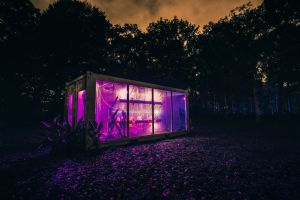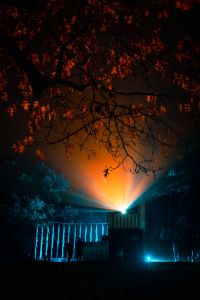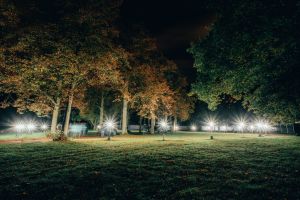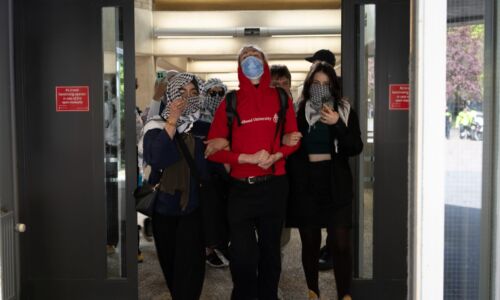Schemerlicht depicts climate change as only artists can
-
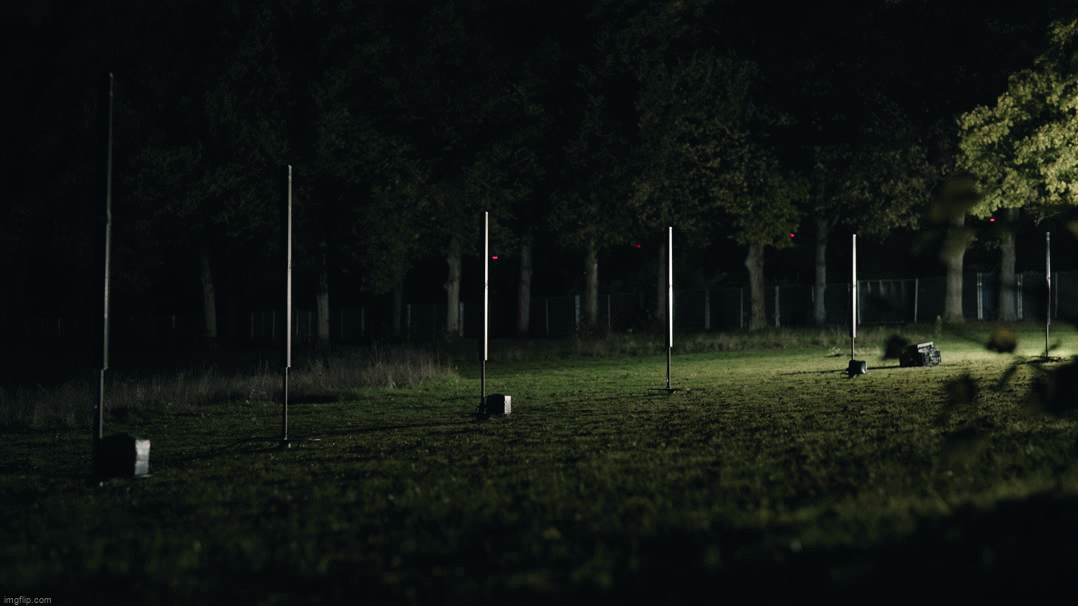 Video: Johannes Fiebig
Video: Johannes Fiebig
Fifteen audiovisual artworks buzz, growl, rustle, and flicker in a dark Goffertpark this week. Inspired by science, Schemerlicht Festival (Twilight Festival, ed.) artists try to depict what climate change means for humans and nature.
‘Mum! What’s more polluting, a car or a plane?’ A little boy looks at his mother in anticipation. She stutters. ‘Uhm, that is actually pretty hard to compare.’ She grabs her bag. ‘Does anybody want some candy?’
The distraction method works, her other children are quickly chewing candy and thus keep their mouths shut. But the question about pollution was asked this dark evening in the Goffertpark, and that is exactly what the scientists and artists of Festival Schemerlicht want. They hope to get visitors thinking about the interaction between humans and nature.
Breathing lung
Since last weekend, fifteen audiovisual art installations were constructed in the Nijmegen city park. Windowseat is the name of the artwork where the boy was just wondering whether a car or a plane is worse for the climate. On two projection screens – one of which simulates a plane window – images of a cow, partying people, and a cloudy sky are depicted. The accompanying sounds have been enhanced and sound threatening. The message is clear: we humans are a disturbance.
Linda Carton is one of the scientists who worked on the festival on behalf of Radboud University. ‘In May, there was a meeting in the botanical garden the Hortus’, she says. ‘The artists came to Nijmegen to be inspired.’
Carton does research on the emissions of particulates. She is involved in a citizen initiative to measure the air quality at different spots throughout the city. Her theme led to a large balloon of air that is breathing eloquently this evening in the Goffertpark. The illuminated ‘lung’, created by artist Elsemarijn Bruyns, is supposed to depict that we cannot live without oxygen.
‘The great thing is that artists manage to touch the audience with their artworks’, Carton thinks. ‘They created an artwork that evokes emotions. For us scientists, that is hard to do with our graphs.’
Ruin of human life
Spread throughout the park are gigantic installations that are buzzing, growling, rustling, and flickering. The warm Autumn evening creates small tornados of tree leaves that disappear in the dark. Large poles broadcast a female voice talking about a wordless meeting between people. The atmosphere under the trees is like a fairytale, but also ominous.
‘Here, the artists make the invisible visible’, is how Riyan van den Born sums up the festival. As a social environmentalist, she was also involved with Schemerlicht. Her research theme is the grief people experience because of the loss of diversity. ‘That feeling is hard to capture in words. But it is greatly inspiring for people who are busy with art’, she says.
What to think of the artwork Issiz by Nikki Hork, which is described in the programme booklet as ‘a ruin of human life’? The art installation looks like an abandoned greenhouse, filled with flickering lights and overgrown by loose electricity cables. Here and there, a plant still grows. The greenery is on loan from Radboud ecologist Hans de Kroon (the guy with the disappearing insects). ‘Mankind is destroying itself’, the accompanying text reads. ‘We owe our demise to ourselves.’
Luckily, there is a cosy pancake shop at the entrance.
This is the second edition of Schemerlicht. Last year, the audiovisual art festival was held in the Hortus and the theme was water. However, organisers found the event too stressful for the botanical garden, so it has now been moved to the wider Goffertpark. The festival can be visited until 30 October. There are also lectures, including ones by scientists from Radboud University.
